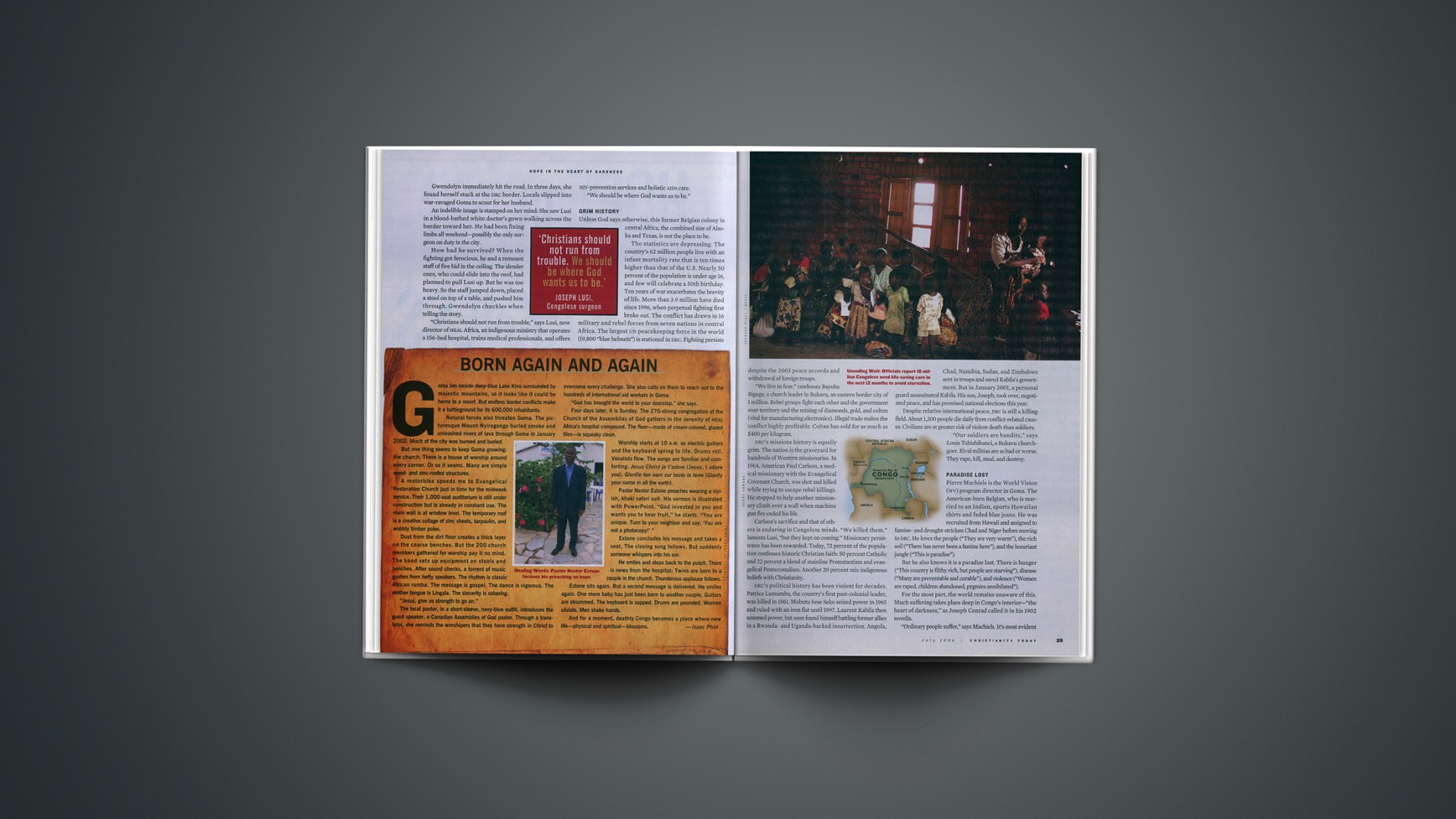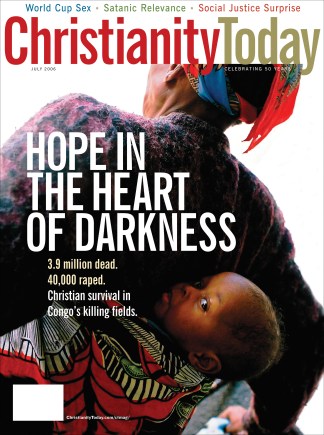Goma lies beside deep-blue Lake Kivu surrounded by majestic mountains, so it looks like it could be home to a resort. But endless border conflicts make it a battleground for its 600,000 inhabitants.
Natural forces also threaten Goma. The picturesque Mount Nyiragongo hurled smoke and unleashed rivers of lava through Goma in January 2002. Much of the city was burned and buried.
But one thing seems to keep Goma growing: the church. There is a house of worship around every corner. Or so it seems. Many are simple wood- and zinc-roofed structures.
A motorbike speeds me to Evangelical Restoration Church just in time for the midweek service. Their 1,000-seat auditorium is still under construction but is already in constant use. The main wall is at window level. The temporary roof is a creative collage of zinc sheets, tarpaulin, and wobbly timber poles.
Dust from the dirt floor creates a thick layer on the coarse benches. But the 200 church members gathered for worship pay it no mind. The band sets up equipment on stools and benches. After sound checks, a torrent of music gushes from hefty speakers. The rhythm is classic African rumba. The message is gospel. The dance is vigorous. The mother tongue is Lingala. The sincerity is sobering.
“Jesus, give us strength to go on.”
The local pastor, in a short-sleeve, navy-blue outfit, introduces the guest speaker, a Canadian Assemblies of God pastor. Through a translator, she reminds the worshipers that they have strength in Christ to overcome every challenge. She also calls on them to reach out to the hundreds of international aid workers in Goma.
“God has brought the world to your doorstep,” she says.
Four days later, it is Sunday. The 270-strong congregation of the Church of the Assemblies of God gathers in the serenity of heal Africa’s hospital compound. The floor—made of cream-colored, glazed tiles—is squeaky clean.
Worship starts at 10 a.m. as electric guitars and the keyboard spring to life. Drums roll. Vocalists flow. The songs are familiar and comforting. Jesus Christ je t’adore (Jesus, I adore you). Glorifie ton nom sur toute la terre (Glorify your name in all the earth).
Pastor Nestor Estone preaches wearing a stylish, khaki safari suit. His sermon is illustrated with PowerPoint. “God invested in you and wants you to bear fruit,” he starts. “You are unique. Turn to your neighbor and say, ‘You are not a photocopy!’ “
Estone concludes his message and takes a seat. The closing song follows. But suddenly someone whispers into his ear.
He smiles and steps back to the pulpit. There is news from the hospital: Twins are born to a couple in the church. Thunderous applause follows.
Estone sits again. But a second message is delivered. He smiles again. One more baby has just been born to another couple. Guitars are strummed. The keyboard is zapped. Drums are pounded. Women ululate. Men shake hands.
And for a moment, deathly Congo becomes a place where new life—physical and spiritual—blossoms.
Copyright © 2006 Christianity Today. Click for reprint information.
Related Elsewhere:
Also posted today is:
Cover Story
Hope in the Heart of Darkness | With 3.9 million dead and 40,000 raped, Christians work for renewal and healing in Congo’s killing fields.
Sidebar
From Rape to Rebuilding | Women persevere in the Congo despite daunting obstacles.
Sidebar
Gospel Work in Time of War | Who says evangelism has to stop during conflict?
Inside CT
Glimpses of God in Africa | Reporting from the heart of darkness.
Previous Christianity Today coverage of the Congo includes:
Uncivil War | Missionary tells of horrors in strife-torn Congo. (July 25, 2005)
Roadblocks to Mercy | Congolese Christians won’t allow a civil war to curtail outreach, church-planting. (Dec. 22, 2000)










